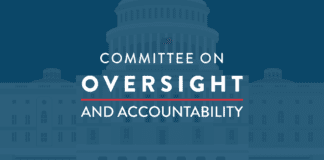As the international community works toward meeting net-zero carbon emission targets, many countries are extending the lifespan of currently operating nuclear power plants and developing new advanced nuclear reactors. They know that renewable energy will not be sufficient enough to substitute for the existing energy from fossil fuels. However, South Korea is going against the global trend and is trying to cut down its use of nuclear power plants and coal power plants while expanding the renewable energy sector.
One of the first policies that the current Moon Jae-in administration pushed ahead with was the phasing out of nuclear power – declaring it was for safety reasons. Many experts warned that nuclear power is the only reliable and efficient power source, especially when it comes to a small country such as South Korea.
However, the Moon administration was able to proceed with the nuclear phase-out plan with strong approval from the public during the beginning of his term. Conservatives lost much of their political power due to the impeachment of former President Park Geun-hye, and were not able to confront Moon’s plans as effectively as they wished to in the beginning of his term. Also, Moon was able to expedite the process since the country’s sole nuclear power company Korea Hydro & Nuclear Power (KHNP) is technically owned by the government.
According to KHNP, 442 nuclear power plants are operating across the world as of December 2020, and the lifespan of 200 of them has been extended. The United States extended the operating licenses for 86 plants out of the 94 total plants operating in the country. Canada is operating all of its 19 nuclear plants that have already passed their original lifespan. France extended the operation license of 32 nuclear power plants. Japan recently decided to reopen 3 nuclear power plants that were temporarily shut down after the 2011 Fukushima incident. Japan considered plans to go to ‘zero nuclear’ after the crisis, but recently approved the restart of the plants due to various reasons, including energy shortages and hikes in energy costs.
South Korea, on the other hand, has not extended the life of a single unit among the 24 plants operating in the country. Instead, the Moon administration will slowly phase out the country’s nuclear power plants. Under Moon, South Korea shut down the Wolsong power plant Unit 1 prematurely, and the government’s alleged involvement in manipulating the economic feasibility study behind the plant shutdown is under investigation. The Moon administration also facing criticism after it was found out that they reviewed ways to build a nuclear power plant in North Korea, which is an idea that contradicts its policy of phasing out of nuclear power in the country for safety reasons.
In the United States, the Nuclear Regulatory Commission (NRC) issues licenses for nuclear power plants to operate for up to 40 years and allows licenses to be renewed for up to 20 years with every approved renewal application. Recently, the NRC has approved an application from Dominion Energy for a 20-year extension to its 2 units. They will now be able to operate for 80 years after they were first built. Many countries around the world follow similar measures to extend operating licenses if the regulatory agency does not find any significant safety-related issues.
Even though the world is moving toward this energy trend, the Moon Jae-in government continues to announce its plans to develop large-scale offshore wind projects to meet its net-zero carbon emission goal without changing its policies toward nuclear energy.
On May 6, President Moon Jae-in visited Ulsan, a city in southeastern South Korea, and said the government is planning on developing a floating offshore wind project in the region. The government said that it will invest about 36 trillion won ($32.3 billion) to create a wind generation complex with the capacity of generating 6GW of energy by 2030. “This capacity would be the same as that of six older nuclear power plants,” Moon said.
In February, Moon also announced his plans to develop offshore power plants in Sinan, South Jeolla, with an installed capacity of 8.2GW by 2030. He said this offshore wind project, which would be the world’s biggest, would cost around 48.5 trillion won ($43.6 billion).
However, many experts in South Korea are showing concerns about offshore wind projects, as they are less cost-efficient than nuclear power and they caution that Moon’s arguments such as “its capacity would be the same as that of six nuclear power plants” are only half right.
One of the problems with renewable energy is the capacity factor, which is the ratio of the actual amount of electricity generated by a plant compared to the maximum amount that it could potentially generate, or installed capacity.
The installed capacity of South Korea’s latest nuclear power plant is 1.4GW, and that of the older design is around 1GW. By simple math, it is true that each wind project (8.2GW and 6GW) Moon is proceeding with has installed capacity that is around six times bigger than that of a single nuclear power plant. However, this is a meaningless comparison in the energy sector.
Wind power’s installed capacity is based on maximum power with a wind speed of 11 meters per second. In South Korea, the average wind speed is 7 meters per second, and the direction of the wind is not constant. As of last year, South Korean wind plants’ average capacity factor was only 24 percent. The situation in South Korea is clearly different from countries in Northern Europe, where the wind blows 11 meters per second in a constant direction most of the time. Even in Northern Europe, the capacity rate is about 50 percent.
The South Korean government argued that its capacity factor will be around 30 percent. This means that the 8.2GW wind project will generate 59GW per day (8.2GW*0.3 percent*24 hours).
The capacity factor for nuclear power plants in South Korea is around 85 percent. This means that the plants operate almost constantly. If the 85 percent rate is applied to the 8.2GW capacity that the government is planning on building through wind projects, it would create 167.3GW per day(8.2GW*0.85*24hours). When compared to 167.3GW of electricity, 59GW that can be created through a wind project is only about two to three nuclear power plants, not six.
“It is either that the president does not understand the difference between installed capacity and actual capacity factor or he is deluding and deceiving people,” said Joo Han-gyu, professor of nuclear engineering at Seoul National University. “A wind plant can only generate one-ninth of the energy that a nuclear power plant with the same installed capacity generates. He said the wind project would cost 48 trillion won, and this means that the wind is 14 times more expensive than generating the same amount electricity with nuclear power throughout the lifespan.”
Professor Joo has written various columns and reports warning of the Moon government’s naïve approach to phasing out nuclear power.
“Let’s say there are two cars with a maximum speed of 100km/h. One could accelerate up to 85 percent of the total capacity and it drove for two hours. This car traveled 170km. Another car only could accelerate up to 30 percent, and this means that it only traveled 60km. Their manufactured maximum speed was the same, but the gap in the distance they traveled was 110km. I think this example explains the difference between nuclear and wind.”
Another key factor that needs to be considered when reviewing the economic feasibility of power plants is the lifespan of power plants by type. The lifespan of a wind turbine is about 20 years. But nuclear power plants usually operate for around 60 to 80 years. This means that nuclear power plants will generate more energy over time even if their installed capacity was the same as wind power plants, as Moon argued.
“Wind power plants need to be decommissioned and reconstructed, while other nuclear power plants built at the same time operate for 60 years,” said Jeong Yong-hoon, associate professor of nuclear engineering at Korea Institute of Science and Technology. “This means that the electricity generated by newly developing wind power would be even less than that generated by a single nuclear power plant.”
In addition, the floating wind power technology mentioned by the government still has a long way to go before it can be commercialized. It requires long underground cables to bring the energy generated inland. Offshore wind plants operating in the United Kingdom and Portugal are installed around 20 kilometers from the shore. However, the South Korean government aims to develop wind power plants 50 kilometers away from the shore, which lowers their economic feasibility.
Moreover, there also are environmental groups that are against offshore wind power plants. They argue that the marine ecosystem could be destroyed due to noise and vibration coming from the wind turbines.



